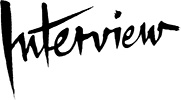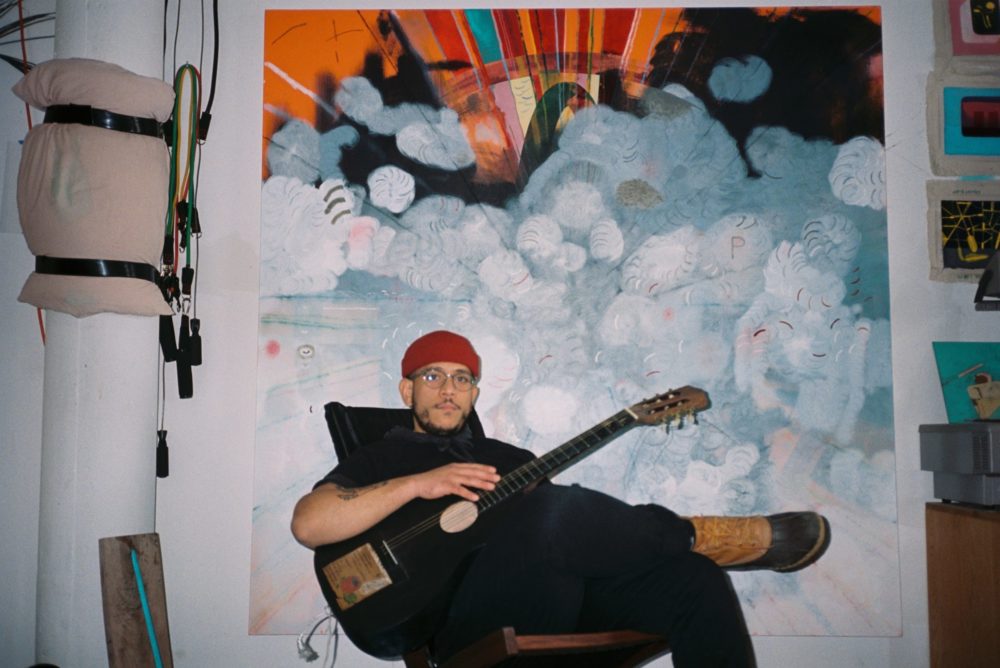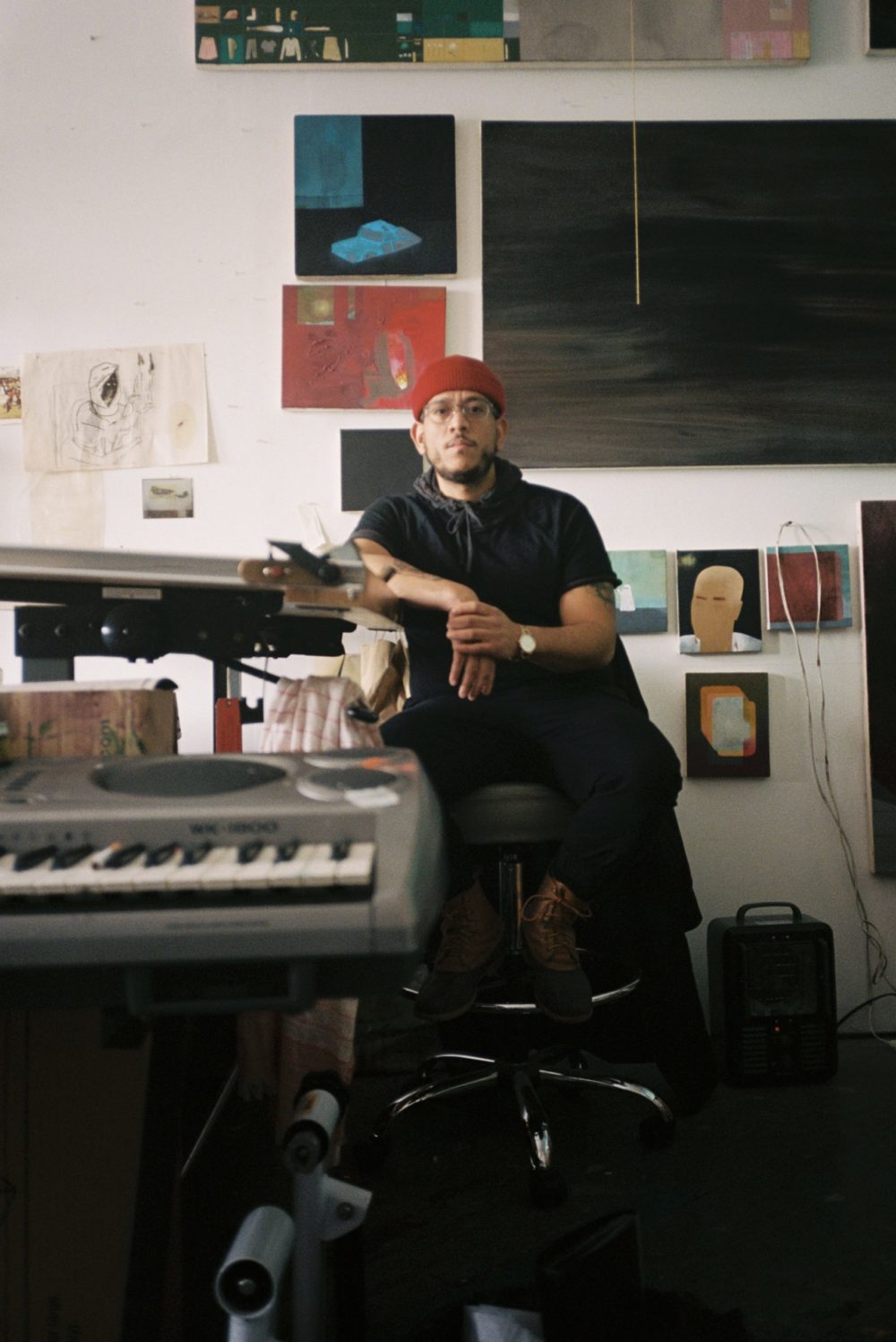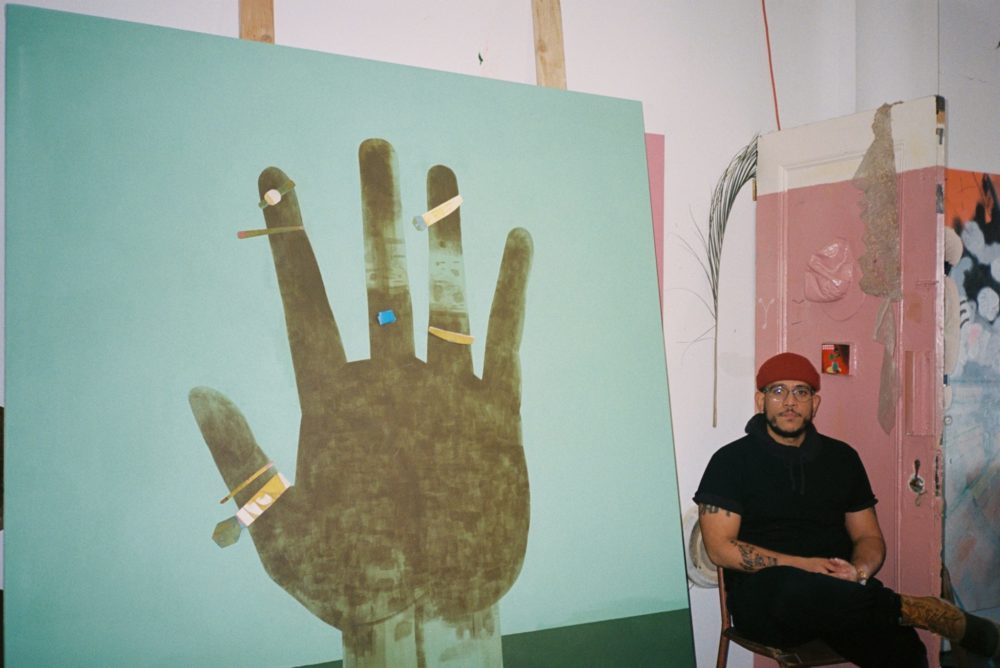
- Source: INTERVIEW MAGAZINE
- Author: SAAM NIAMI
- Date: MARCH 17, 2021
- Format: ONLINE
Kenny Rivero Is Painting the Monsters We Choose to Ignore

Kenny Rivero paints the monsters under the bed. The sort that make you have to dream extra hard, just to distract you enough to forget their snoring. And his paintings feel like attempts to recreate these dreams, monsters and all. They often include references to pop culture and New York streets, but through the distorted, unfamiliar appearance they make in dreams—references not to the material, but our memory of them. He floats between the realms of reality and magic, balancing between the imagined and the physical as much as his illusions require. They are intricate, intentional, and cross-dimensional, manipulated through shape and line. They’re as formalistic as they need to be, to provide an idea enough leg strength to run.
Kenny is represented by the Charles Moffett Gallery in New York, where at the beginning of 2021, he premiered his solo show I Still Hoop, a 17-work presentation of pieces created throughout the previous year, as he processed its traumatic events through his lens as a Dominican-American with an ever-present fear of death. Rivero also has permanent collections at The Whitney, The Studio Museum, and the Pérez Art Museum. On March 17th, his first museum solo show at the Brattleboro Museum & Art Center in Vermont, featuring 29 never-before-seen drawings, premieres to the public for both in-person and virtual walk-through.
I met Kenny in his studio in the Bronx on a cold day in February. It’s a place of intense peace and process for Kenny, whose work is strewn about throughout the studio, a personal archive interspersed with instruments. (Kenny is a trained musician.) We spoke of magic, god, and breathing through your work.
SAAM NIAMI: How are you doing today?
KENNY RIVERO: Good. I’ve been trying to organize the work into the different shows it’s going into. I’ve been trying to map out the year as a whole body of work in different parts, trying to build this narrative, group the paintings that end with the show in November. Close that cycle of work.
NIAMI: You’re coming off of I Still Hoop. How was that show?
RIVERO: It was good, the work in that show. I don’t want to call it cathartic, but it was deeply the momentum of 2020 ending in that. It synthesized a lot of what I was going through. And the meaning of it came through in me viewing it all as a show. It had a lot to do with my connection to faith and how it evolved over the year. It had to do with my connection to working and being in the woodshed, understanding that everyone’s in the woodshed right now, we’re all in quarantine. The isolation becoming different during quarantine. The opportunity to grow a bit and pick things up in the studio. There’s been a lot of sorting through ideas of being multi-faith and identifying as multi-faith. I grew up with a very Christian father, and Catholic, voodoo, African diaspora-faith on my mother’s side. I grew up appreciating both and not seeing them at odds, until I was an adult and realized a lot of these things don’t mesh. Realizing that I have a certain relationship to Jesus and the Bible. A lot of those things synthesize in that show.
NIAMI: Can you go more into how that affected the show?
RIVERO: I was really curious about the process of learning and how narratives jump from culture to culture. Thinking a lot about the Quran, Nation of Islam, Elijah Muhammad encountering Ezekiel’s Wheel and his account of that. Going back to Ezekiel’s Wheel and reading that text, reexamining the relationship with visitations, apparitions, and technology in a way. A lot of the paintings started with thinking about these biblical stories about encounters. The work has always been about channeling and making space for ancestors and spiritual energy, but I’m also provoking it. I’m not making homage all the time. I’m trying to propose something, instigate something, charge something, activate something.
NIAMI: Your work made me think a lot about magical realism, and a lot of the theory work done with magical realism and magical thinking in relation to artists of color and their processes with trauma—life does not make sense a lot of the time, and you are forced to think magically. What does magic do for your work and where does it take you?
RIVERO: I think I’m building a world around myself that feels safer than the one I encounter. My memory of growing up was being afraid all the time. Not necessarily in clear ways, but my memory of being terrified of going outside. I was never abused as a kid in my home, but there were a lot of dangerous people around me and I would not realize I’m in a dangerous situation. There’s a lot of world-building and wish-fulfillment going on, adjusting things to accommodate who I am.
The work comes from longing, it comes from mourning. There’s a lot of grief in the work. Thinking about beauty and making things beautiful, I’m trying to trick the viewer into unpacking something a lot more heavy and serious. These are not necessarily things I want decoded—I don’t necessarily care what the viewer is able to unpack in the work, for me, it’s just a place to put it. It’s not to exorcize from my body, but rather something I can play with and understand for myself.

NIAMI: When I look at all of your pieces, I notice a lot of work with shape. A lot of the magic and illusion appears with your manipulation of shape—things that are supposed to look one way look completely different. I’m curious how you approach shape and how you relate the shape of one thing with another thing in your subject matter. If you manipulate one shape, how does it affect the shapes you don’t manipulate?
RIVERO: I think a lot of people don’t necessarily see this when they see the work. I always start formally. I never start with a plan. When I start with a plan or start sketching—I get so fucking bored. For me, the spirit of painting comes from discovering what the work means to be. That sounds wishy-washy, but it really is me being anxious working through the paint and being frustrated and erasing things and maybe discovering a moment that looks like an elbow. And then that becomes a figure or something else. I’m trying to be present with the work. When you said that, it made me think of a corner of a building that eventually turned into something flatter. Those moments are about me talking about painting, me thinking about the material, me discovering what the paint can do, what I can do optically. I veil that with the content of the work. For me, they’re separate, and they calibrate at some point, and that’s when it finishes. When I see something and I think, “Oh, that looks a lot like an idea I had months ago.” I’m constantly making lists, titles for works, titles for songs, constantly writing things down that catch up with the painting somehow.
NIAMI: You’re self-referential.
RIVERO: Exactly.
NIAMI: Walk me through what it looks like when you start a painting.
RIVERO: It’s the most terrifying thing in the world. It’s one of the only things that does that to me. It’s like I’ve never even painted before. Like, what if this is the painting that makes everyone go, “Kenny’s a fraud, he doesn’t know how to paint?” But it’s like boxing, like working out. You train and you train but you’re not doing these exercises in the ring. So you just hope you show up for the ring and it all starts working. I think a lot about cadence and rhythm. I start with lines and grids. I listen to something or I think of a drum rudiment, something very basic. I’m trying to meter myself as I approach the surface. It’s something I learned from drumming that one of my teachers taught me when he taught me to solo. A drummer doesn’t have to breathe into their instrument, so there’s no pause. To phrase effectively you have to have a sense of cadence because your hands can go forever. I can fill the surface, but what happens when I can’t breathe anymore? What if I just do it with my breath? If a car alarm is going off outside and it stops, I stop. I let my hands move and let my training come out and I stop and tweak when I notice something is happening with the painting. It’s discovering the painting and following that thread. Starting with playfulness and letting the materials go. If I make this mark, I’m going to have to come back to it later, and it’s going to have to be something else. It’s about letting myself go and restraining in an intuitive way.

NIAMI: I was thinking about how horrifying a lot of the work would look if it was hyper-realistic, but your style and its whimsical nature allow for more fun and pleasure to play out in scenes that would otherwise be frightening. Where in the process do you decide on the mood of a painting?
RIVERO: I’m not sure. I don’t think I decide. I arrive at a melancholy place always, and it’s me resisting the melancholy with beauty. I replace it, and there’s tension. At the end of the day, the world can be pretty awful, but the world is also dope. I’m not necessarily thinking about presenting that as what I’m sharing with the viewer, but it’s really about finding the moments you can slow down in. Beauty and playfulness are about letting someone wander on the surface and unpack it and process it slowly. It’s about keeping someone engaged. I want there to be a certain level of accessibility in my work, but I also want to resist that. I don’t want to reveal everything that easily.

